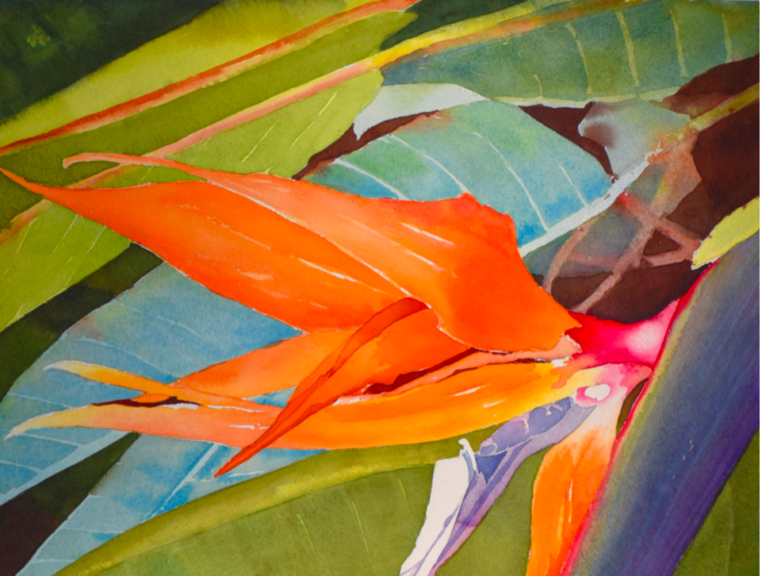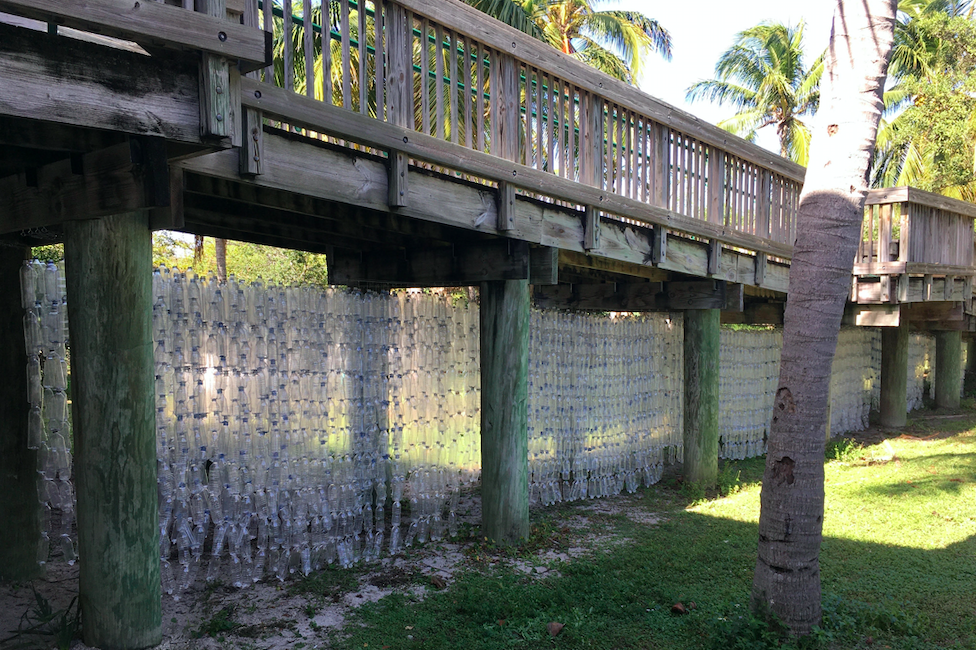Watercolors and Plastic Bottles on View at Biscayne Nature Center
February 3, 2020

“Paradise Found” is one of 33 watercolors by Diane Lary on display at the Marjory Stoneman Douglas Biscayne Nature Center through March 1 (Photo courtesy of the Biscayne Nature Center)
The Marjory Stoneman Douglas Biscayne Nature Center launches its 20th year in its Crandon Park building with a celebration of art featuring bright tropical watercolors and an immersive installation made of thousands of discarded plastic bottles.
“Art exhibits are another dimension of our work,” said Theodora Long, executive director.
Named for the late conservationist and author, the center focuses on the environment; but art has been central to its mission since the building opened.
The program started as a summer camp in 1969, operating out of beach hot dog stands and later a trailer. In 2000, it moved into its beachside headquarters and expanded into an environmental education center with lab and exhibition space.
As the grand opening approached, Long had a sudden realization. Wildlife exhibits were in place, but the space looked unfinished.
“We had an 11,000-square-foot building. Everything was white inside, and we had nothing on the walls,” she said.
As a last-ditch effort, the staff contacted Clyde Butcher, an award-winning wilderness photographer and a good friend of Douglas. With two weeks notice, he delivered a truckload of his large-format photographs, recalled Long.
The center has featured many notable artists since, including repeat exhibits by Butcher. It asked Freda Tschumy, a prominent sculptor, to create a bronze statue of Douglas seated on her sofa at home. Created for display at the center, it is on loan to Fairchild Garden after the Crandon Park Master Plan objected to anything resembling a memorial.
“Marjory loved the idea of the statue,” Long said. “She wanted the children to sit next to her as though she were telling them secrets about the environment.”
Long, who happens to have an art history degree, schedules six exhibits a year, opening each with a wine-and-cheese reception. The exhibits, she said, reach a different audience than the pre-K through college students who explore nature at the center.
On view now are the tropical watercolors of Diane Lary, who teaches art at Fairchild and is slated to be Florida Watercolor Society president in 2021. Trained as a scientist, she tried her hand at art after moving into a Redlands home she calls “Jungle Outpost.” She blogs as The OutPost Artist.
“I believe that my tropical-infused artwork has emerged from my desire to capture images, scenes, ideas and feelings I get from the beauty of nature that surrounds me,” she explained.
The 33 watercolors on display are her first solo exhibit. A closing reception is scheduled March 1, 4 – 6 p.m.
Also on display through Feb. 23 is “Waterway,” a walk-through art installation constructed of 7,000 plastic bottles strung together for 1,000 feet and suspended beneath an outdoor walkway on the north side of the building. Intended to bring the environmental crisis home, the bottles were collected from University of Miami trash.
The installation is a collaboration between Jenna Efrein, a University of Miami lecturer, and Christin Paige Minnotte, Laundromat Art Space creative director. It invites the viewer to “swim” through the plastic, mimicking the experience of swimming in an ocean polluted with billions of plastic bottles. It can be experienced even when the center is closed.
After the nature center, the installation will be displayed in March and April at the Bakehouse Art Complex where Efrein has a studio.

“Waterway” by Jenna Efrein and Christin Paige Minnotte is constructed of 7,000 plastic bottles strung together for 1,000 feet (Photo courtesy of the Biscayne Nature Center)
Hours: 9 a.m. – 4 p.m.
Thirty percent of gallery sales support the Biscayne Nature Center’s underserved children’s programming.


